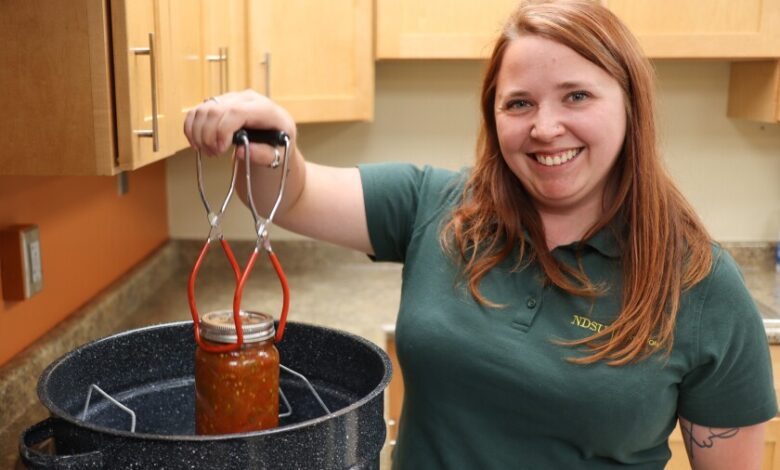Tips for safely canning the tomato harvest – InForum

It’s my pleasure to introduce a guest columnist this week to pass along the latest and safest recommendations for home tomato canning. Tomatoes are America’s favorite homegrown vegetable, and canning is a great way to preserve the harvest.
Each year, the North Dakota State University Extension gives students the opportunity to serve as interns in county Extension offices, and Bethany Teets is interning here in Cass County under the guidance of Rita Ussatis, family and community wellness agent.
As part of Bethany’s training, I gave her the chance to write a newspaper column about canning tomatoes, a topic dear to the hearts of gardeners.
Let’s welcome Bethany! Bethany, the floor is yours!
Hi. I’m Bethany Teets, a student at NDSU, where I’m currently completing my bachelor’s degree in human development and family science and working toward my master’s degree in family and consumer science education. I’m from West Fargo originally.
I recently had the opportunity to participate in a canning workshop in which NDSU Extension agents from Eastern North Dakota gathered in Fargo to perfect their canning skills and review the latest safe techniques.
Michael Vosburg/The Forum
The history of canning is fascinating. It was first developed in 1810, followed by the Mason Company patenting the first glass jars in 1858. During World War I, President Hoover urged all Americans to grow and preserve as much food in their backyards as possible.
The peak of canning occurred in 1943, with over 4 billion cans and jars preserved. By 1945, canning started to dramatically decline after the refrigerator was invented and food was easier to keep from spoiling.
Canning was becoming a lost skill until the pandemic. With more people staying home, and with supply chain issues, many people discovered home food preservation.
One of the most popular foods to can is the tomato, with all its different shapes, sizes and colors. Cultivars such as San Marzano and Roma are the best tomatoes for canning, with their meatier consistency and less water and seeds. Many other varieties are also suitable.
Harvest tomatoes when they are firm, and for canning, they should be vine-ripened, free from diseases, and not harvested from dead or frosted vines. Fully ripened fruits are best, although tomatoes that are nearly ripe can also work.
During the canning workshop, I learned the importance of properly preparing canning jars, ensuring they’re washed and clean. Hot water or a dishwasher is a preferred method to cleanse and sterilize. Then prepare the canning lids according to the instructions of the lid manufacturer.
Next, wash the tomatoes thoroughly in cool running water, then place in boiling water for 30 to 60 seconds until the skin splits. Remove the tomatoes from the boiling water and put in cold water until the skin can slip off. Remove the cores and cut up as the recipe instructs.
After jars are ready, fill with the hot product as directed in the recipe. Be sure to remove air bubbles in each jar by scraping the inside of the jar with a nonmetallic or plastic spatula.
Next, clean the top sealing edge of the jar with a damp paper towel. Add the lids and tighten the screw band finger tight.
Process the jars in either a boiling water bath or pressure canner. Different altitudes affect and determine the time or pressure needed to ensure a perfect seal. In a boiling water bath, whole or halved tomatoes should be processed for 40 minutes for pints and 45 minutes for quarts at altitudes up to 1,000 feet. Begin timing when the water returns to boiling.
After jars are sealed, place them on a towel or a cooling rack. Do not retighten the screw bands, and let cool for 12 to 24 hours. After the jars are cool, remove the screw bands and check for a proper seal, indicated by the center of the lid indented.
If a jar is not properly sealed, you can reprocess the tomatoes the same way, but with new lids. When jars are properly sealed, wash, dry, label and store jars in a clean, cool, dark place. Tomatoes are best eaten within one year, but are still safe to eat while the jar is still sealed.
Tomatoes can be very acidic depending on the variety. Precautions must be taken when canning to add vinegar or lemon juice to prevent the growth of bacteria.
For more information on this and other related topics, see
or contact Rita Ussatis at
or 701-241-5700.





